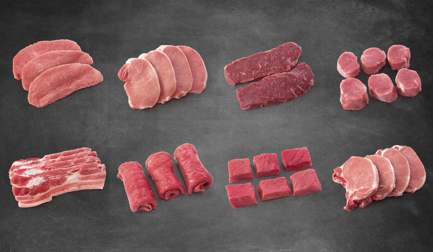Why is meat flattened?
Gourmets agree: A good schnitzel, Viennese or Figlmüller style for example, must be thinly sliced and gently flattened to produce a meat portion of uniform thickness. The process slightly breaks the meat fiber but does not destroy it. This also allows marinade or breading to adhere much better.
To ensure the Schnitzel does not contract and become tough during frying but retains its shape even at high temperatures, it is essential that flattening takes place as gently as possible.
If all the parameters are right, the result is a gourmet schnitzel that is crispy and crunchy on the outside during frying and does not brown too quickly. On the inside, it remains juicy and tender. With Wiener Schnitzel, for example, the typical bubbles that make this traditional dish so special also form.
Which cuts are flattened?
Mainly cuts such as loin, topside and knuckle. These are then processed into Wiener Schnitzel, Swiss or Figlmüller-style, piccata Milanese, veal escalopes, involtini / beef roulades, etc.




